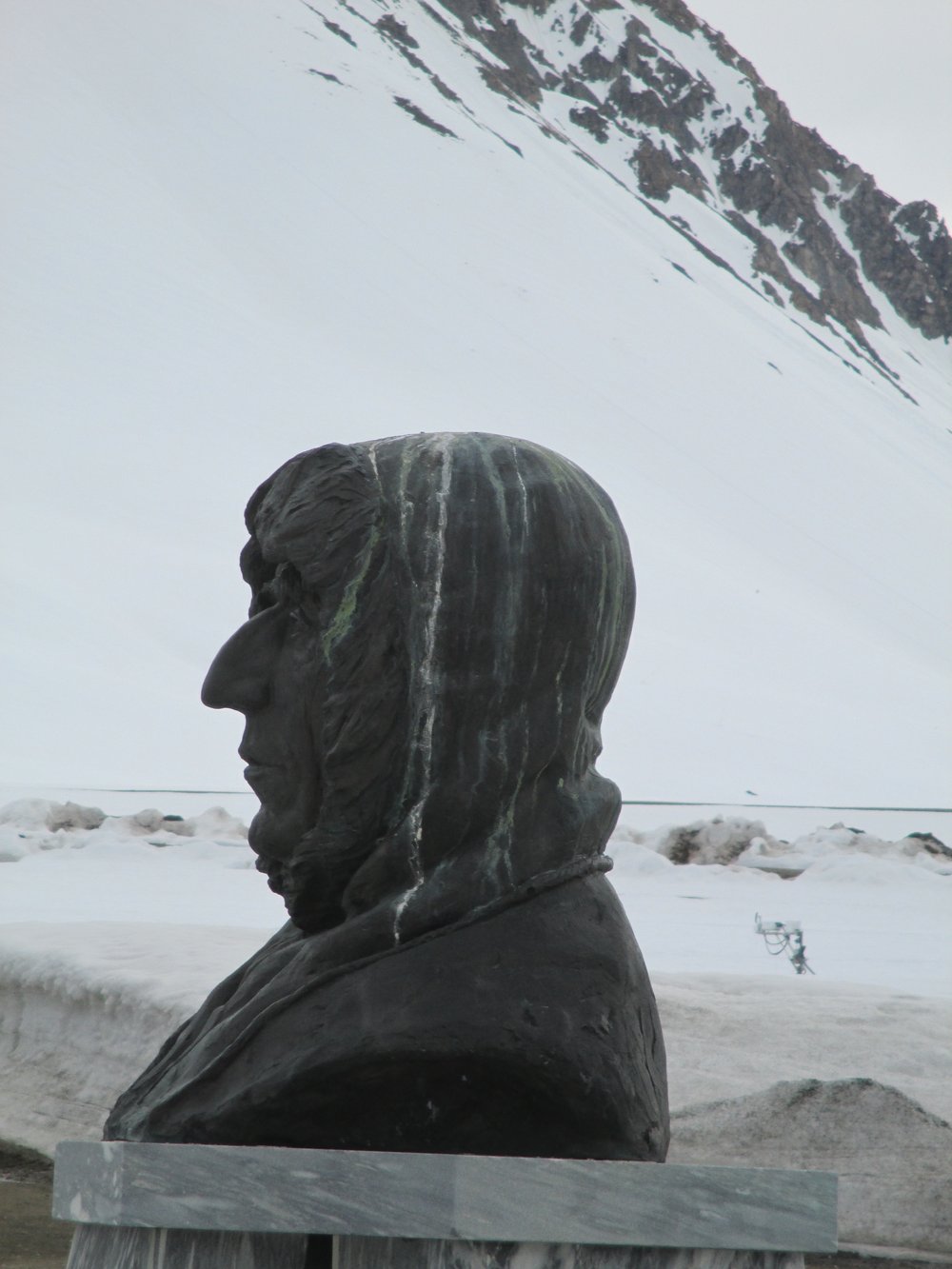Ny Ålesund

The history of explorers attempting to fly over the pole is a long and elaborate one. I spent hours looking at photos and film about it in the marvelous airship museum in Longyearbyen. The first attempts to fly over or to the pole begin with the American journalist Walter Wellman in 1907. His three-hour attempt cost over $100,000 and was an unqualified disaster. If you look at the size and clumsiness of a dirigible—which is really a huge sack of hydrogen— it’s easy to understand why this was a disaster. What is harder to understand is why people continued to attempt this feat.
 Bust of AmundsenAmundsen, who in his day was a hero and media darling, is one of the greatest explorers ever to have lived. He was the first to the South Pole, the first to navigate the northwest passage and the second through the northeast passages. And, he is probably as well the first to cross the North Pole. After each expedition, he turned to the next challenge, both technological and geographical. He mastered moving across ice with skis and dogs on his expedition to the South Pole. Air—planes and dirigibles—were the next frontier.
Bust of AmundsenAmundsen, who in his day was a hero and media darling, is one of the greatest explorers ever to have lived. He was the first to the South Pole, the first to navigate the northwest passage and the second through the northeast passages. And, he is probably as well the first to cross the North Pole. After each expedition, he turned to the next challenge, both technological and geographical. He mastered moving across ice with skis and dogs on his expedition to the South Pole. Air—planes and dirigibles—were the next frontier.
Amundsen attempted to fly in a plane to the pole before taking on the dirigible. In two planes, he and his fellow adventurers headed out; both planes were damaged when they landed on the ice. He and his men were taken for dead before they emerged, grizzled and half starved several weeks later.
The plan then shifted to using an airship. Airships are lighter than air, and can remain aloft without propulsion. But they are also enormous, not easily maneuverable, and can’t carry much weight. What they also learned is that in fog they ice up, adding to the weight. Ellsworth financed the ship, Amundsen worked on details and Nobile was the engineer on the project. As the airship, the Norge, moved north from Italy toward Ny Ålesund (then known as King’s Bay), they built a protected launch site for it. This included mooring masts, a giant hangar and stockpiles of gas and engine fuel. The remains of the mooring mast stand a few hundred yards out of town. It rises into the air, giving a sense of the size of the beast and the logistics involved in this expedition.
 Mooring mast where the Norge was securedThe three explorers launched the airship and when they floated over the pole, dropped their flags (the Fascist Italian flag much larger than the American and Norwegian) before continuing on in the fog toward Alaska. The fog iced up the ship, making it precariously heavy, but they managed to land near their destination, Nome. The success of this expedition is clouded by the aftermath; the Norge flight became all politics. Nobile proclaimed that it was flying under an Italian flag in the spirit of fascism, while Norway also claimed the ship.
Mooring mast where the Norge was securedThe three explorers launched the airship and when they floated over the pole, dropped their flags (the Fascist Italian flag much larger than the American and Norwegian) before continuing on in the fog toward Alaska. The fog iced up the ship, making it precariously heavy, but they managed to land near their destination, Nome. The success of this expedition is clouded by the aftermath; the Norge flight became all politics. Nobile proclaimed that it was flying under an Italian flag in the spirit of fascism, while Norway also claimed the ship.
This history, not even 100 years ago, feels ages away. Ny Ålesund is now a research town made up of colorful wooden buildings, some sporting the flags of various countries conducting research in the Arctic. The blues and greens make it look like a summer resort. When Amundsen arrived there in 1926 there were 22 houses, a company store, and a coal a mine shaft. Now, tourist ships arrive every day in summer, and we were able to buy postcards and sweaters in the one little shop. But I’m grateful for this casual trip to a place where Amundsen launched his successful expedition and where, a few years later, he headed out only to vanish into the ice of the North.